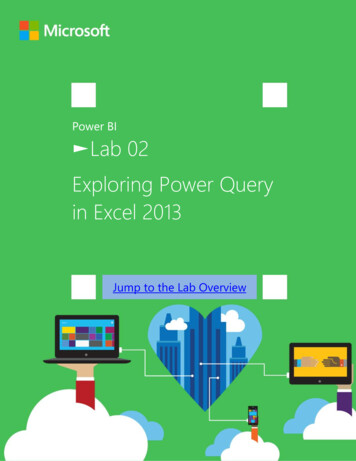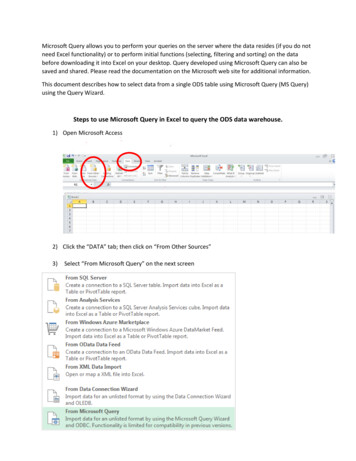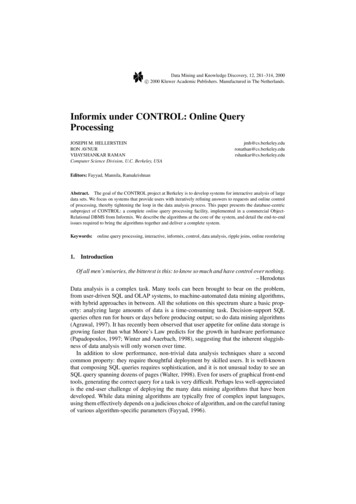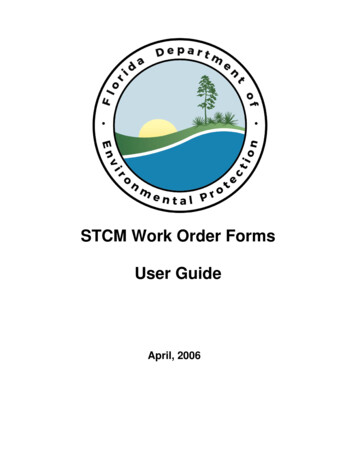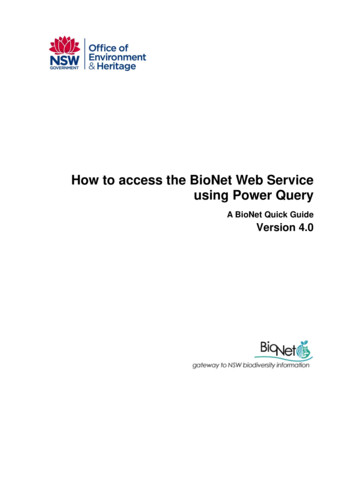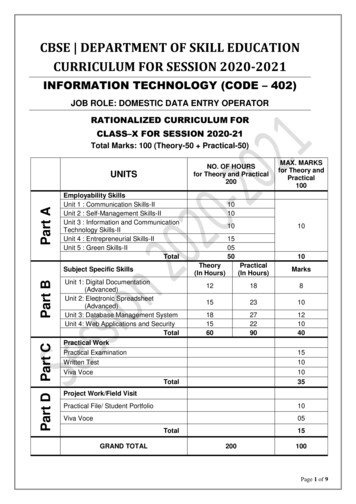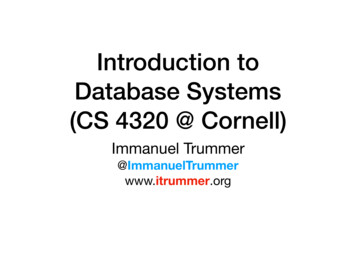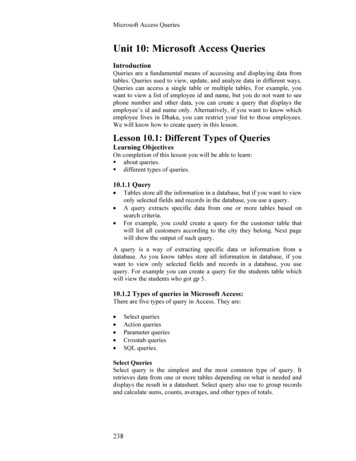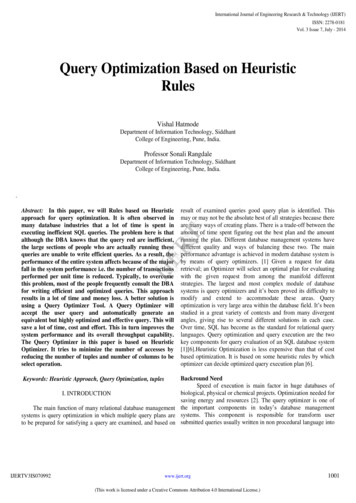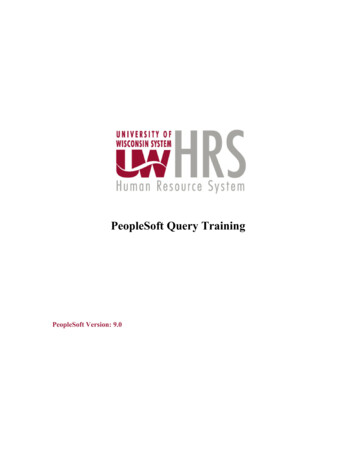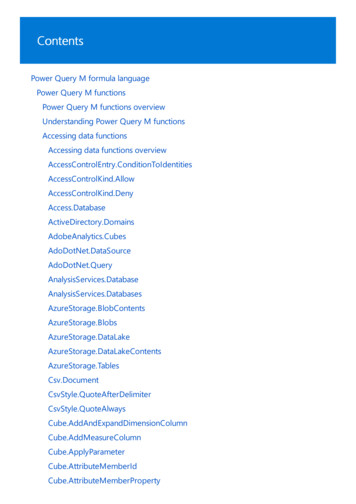
Transcription
ContentsPower Query M formula languagePower Query M functionsPower Query M functions overviewUnderstanding Power Query M functionsAccessing data functionsAccessing data functions rIdCube.AttributeMemberProperty
ormix.DatabaseJson.Document
t.ContentsSharePoint.Files
ry functionsBinary functions .ToListBinary.ToTextBinaryEncoding.Base64
nalOccurrence.Repeating
Occurrence.Required#binaryCombiner functionsCombiner functions TextByRangesComparer functionsComparer functions Date functionsDate functions fWeek
MonthName
teTime functionsDateTime functions extHourDateTime.IsInNextMinute
oRecordDateTime.ToText#datetimeDateTimeZone functionsDateTimeZone functions neHoursDateTimeZone.ZoneMinutes
#datetimezoneDuration functionsDuration functions n.ToText#durationError handlingError handling ngExpression functionsExpression functions ession.IdentifierFunction values
Function values nes functionsLines functions ryLines.ToTextList functionsList functions imeZonesList.DifferenceList.DistinctList.Durations
ist.RemoveNulls
List.ZipLogical functionsLogical functions Number functionsNumber functions romInt8.FromInt16.From
dNumber.NaNNumber.NegativeInfinity
TowardZeroRoundingMode.UpSingle.FromRecord functionsRecord functions ngField.UseNullRecord.AddFieldRecord.Combine
rmFieldsReplacer functionsReplacer functions plitter functionsSplitter functions tedLengths
Splitter.SplitTextByWhitespaceTable functionsTable functions Expression.ColumnRowExpression.From
le.FirstValueTable.FromColumnsTable.FromList
angeTable.RemoveColumns
e.TransformColumns
tableText functionsText functions xt.InsertText.Length
f8TextEncoding.Utf16TextEncoding.Windows
Time functionsTime functions cordTime.ToText#timeType functionsType functions ableColumn
ionUri functionsUri functions ataStringUri.PartsValue functionsValue functions MetadataValue.ReplaceMetadata
ValueQuick tour of the Power Query M formula languagePower Query M language specificationPower Query M type systemExpressions, values, and let expressionCommentsEvaluation modelOperatorsType conversionMetadataErrors
Power Query M function reference11/25/2019 2 minutes to readThe Power Query M function reference includes articles for each of the over 700 functions. The reference articlesyou see here on docs.microsoft.com are auto-generated from in-product help. To learn more about functions andhow they work in an expression, see Understanding Power Query M functions.Functions by categoryAccessing data functionsBinary functionsCombiner functionsComparer functionsDate functionsDateTime functionsDateTimeZone functionsDuration functionsError handlingExpression functionsFunction valuesList functionsLines functionsLogical functionsNumber functionsRecord functionsReplacer functionsSplitter functionsTable functionsText functionsTime functionsType functionsUri functionsValue functions
Understanding Power Query M functions11/25/2019 2 minutes to readIn the Power Query M formula language, a function is a mapping from a set of input values to a single outputvalue. A function is written by first naming the function parameters, and then providing an expression to computethe result of the function. The body of the function follows the goes-to ( ) symbol. Optionally, type informationcan be included on parameters and the function return value. A function is defined and invoked in the body of a letstatement. Parameters and/or return value can be implicit or explicit. Implicit parameters and/or return value are oftype any. Type any is similar to an object type in other languages. All types in M derive from type any.A function is a value just like a number or a text value, and can be included in-line just like any other expression.The following example shows a function which is the value of an Add variable which is then invoked, or executed,from several other variables. When a function is invoked, a set of values are specified which are logicallysubstituted for the required set of input values within the function body expression.Example – Explicit parameters and return valueletAddOne (x as number) as number x 1,//additional expression stepsCalcAddOne AddOne(5)inCalcAddOneExample – Implicit parameters and return valueletAdd (x, y) x y,AddResults [OnePlusOne Add(1, 1),OnePlusTwo Add(1, 2)]// equals 2// equals 3inAddResultsFind the first element of a list greater than 5, or null otherwiseletFirstGreaterThan5 (list) letGreaterThan5 List.Select(list, (n) n 5),First List.First(GreaterThan5)inFirst,Results [Found FirstGreaterThan5({3,7,9}), // equals 7NotFound FirstGreaterThan5({1,3,4}) // equals null]inResultsFunctions can be used recursively. In order to recursively reference the function, prefix the identifier with @.
letfact (num) if num 0 then 1 else num * @fact (num-1)infact(5) // equals 120Each keywordThe each keyword is used to easily create simple functions. “each .” is syntactic sugar for a function signature thattakes the parameter “( ) .”Each is useful when combined with the lookup operator, which is applied by default toFor example, each [CustomerID ] is the same as each [CustomerID ], which is the same as ( ) [CustomerID ]Example – Using each in table row rID [CustomerID [CustomerID [CustomerID }),each [CustomerID] )[Name]// equals "Jim"1,2,3,4,2NameNameNameName "Bob", Phone "123-4567"],"Jim", Phone "987-6543"] ,"Paul", Phone "543-7890"] ,"Ringo", Phone "232-1550"]
Accessing data functions11/25/2019 8 minutes to readAccessing dataFunctions in this section access data and return table values. Most of these functions return a table value that iscalled a navigation table. A navigation table is a two column table. The first column contains the name of anitem and the corresponding second column contains the value of that item. This shape is primarily used by thePower Query user interface to provide navigation experience over the potentially large hierarchical data ditionToIdentitiesReturns a list of identities that the condition will accept.AccessControlKind.AllowAccess is allowed.AccessControlKind.DenyAccess is denied.Access.DatabaseReturns a structural representation of an Microsoft Accessdatabase.ActiveDirectory.DomainsReturns a list of Active Directory domains in the same forestas the specified domain or of the current machine's domain ifnone is specified.AdobeAnalytics.CubesReturns the report suites in Adobe Analytics.AdoDotNet.DataSourceReturns the schema collection for an ADO.NET data source.AdoDotNet.QueryReturns the schema collection for an ADO.NET data source.AnalysisServices.DatabaseReturns a table of multidimensional cubes or tabular modelsfrom the Analysis Services database.AnalysisServices.DatabasesReturns the Analysis Services databases on a particular host.AzureStorage.BlobContentsReturns the content of the specified blob from an Azurestorage vault.AzureStorage.BlobsReturns a navigational table containing all containers found inthe Azure Storage account. Each row has the container nameand a link to the container blobs.AzureStorage.DataLakeReturns a navigational table containing the documents foundin the specified container and its subfolders from Azure DataLake Storage.AzureStorage.DataLakeContentsReturns the content of the specified file from an Azure DataLake Storage filesystem.
FUNCTIONDESCRIPTIONAzureStorage.TablesReturns a navigational table containing a row for each tablefound at the account URL from an Azure storage vault. Eachrow contains a link to the azure table.Csv.DocumentReturns the contents of a CSV document as a table using thespecified encoding.CsvStyle.QuoteAfterDelimiterQuotes in a field are only significant immediately following thedelimiter.CsvStyle.QuoteAlwaysQuotes in a field are always significant regardless of wherethey appear.Cube.AddAndExpandDimensionColumnMerges the specified dimension table, dimensionSelector, intothe cube’s, cube, filter context and changes the dimensionalgranularity by expanding the specified set, attributeNames, ofdimension attributes.Cube.AddMeasureColumnAdds a column with the name column to the cube thatcontains the results of the measure measureSelector applied inthe row context of each row.Cube.ApplyParameterReturns a cube after applying parameter with arguments tocube.Cube.AttributeMemberIdReturns the unique member identifier from a memberproperty value.Cube.AttributeMemberPropertyReturns the propertyattribute .Cube.CollapseAndRemoveColumnsChanges the dimensional granularity of the filter context forthe cube by collapsing the attributes mapped to the specifiedcolumns columnNames.Cube.DimensionsReturns a table containing the set of available dimensionswithin the cube.Cube.DisplayFoldersReturns a nested tree of tables representing the display folderhierarchy of the objects (e.g. dimensions and measures)available for use in the cube.Cube.MeasurePropertiesReturns a table containing the set of available properties formeasures that are expanded in the cube.Cube.MeasurePropertyReturns the property of a measure.Cube.MeasuresReturns a table containing the set of available measures withinthe cube.Cube.ParametersReturns a table containing the set of parameters that can beapplied to cube.propertyNameof dimension attribute
FUNCTIONDESCRIPTIONCube.PropertiesReturns a table containing the set of available properties fordimensions that are expanded in the cube.Cube.PropertyKeyReturns the key of ormApplies the list cube functions, transforms, on the cube.DB2.DatabaseReturns a table of SQL tables and views available in a Db2database.Essbase.CubesReturns the cubes in an Essbase instance grouped by Essbaseserver.Excel.CurrentWorkbookReturns the tables in the current Excel Workbook.Excel.WorkbookReturns a table representing sheets in the given excelworkbook.Exchange.ContentsReturns a table of contents from a Microsoft Exchangeaccount.Facebook.GraphReturns a record containing content from the Facebook graph.File.ContentsReturns the binary contents of the file located at a path.Folder.ContentsReturns a table containing the properties and contents of thefiles and folders found at path.Folder.FilesReturns a table containing a row for each file found at a folderpath, and subfolders. Each row contains properties of thefolder or file and a link to its content.GoogleAnalytics.AccountsReturns the Google Analytics accounts for the currentcredential.Hdfs.ContentsReturns a table containing a row for each folder and file foundat the folder url, {0}, from a Hadoop file system. Each rowcontains properties of the folder or file and a link to itscontent.Hdfs.FilesReturns a table containing a row for each file found at thefolder url, {0}, and subfolders from a Hadoop file system. Eachrow contains properties of the file and a link to its content.HdInsight.ContainersReturns a navigational table containing all containers found inthe HDInsight account. Each row has the container name andtable containing its files.HdInsight.ContentsReturns a navigational table containing all containers found inthe HDInsight account. Each row has the container name andtable containing its files.
FUNCTIONDESCRIPTIONHdInsight.FilesReturns a table containing a row for each folder and file foundat the container URL, and subfolders from an HDInsightaccount. Each row contains properties of the file/folder and alink to its content.Html.TableReturns a table containing the results of running the specifiedCSS selectors against the provided htmlIdentity.FromCreates an identity.Identity.IsMemberOfDetermines whether an identity is a member of an identitycollection.IdentityProvider.DefaultThe default identity provider for the current host.Informix.DatabaseReturns a table of SQL tables and views available in anInformix database on server server in the database instancenamed database .Json.DocumentReturns the contents of a JSON document. The contents maybe directly passed to the function as text, or it may be thebinary value returned by a function like File.Contents.Json.FromValueProduces a JSON representation of a given value value with atext encoding specified by encoding.MySQL.DatabaseReturns a table with data relating to the tables in the specifiedMySQL Database.OData.FeedReturns a table of OData feeds offered by an ODataserviceUri.ODataOmitValues.NullsAllows the OData service to omit null values.Odbc.DataSourceReturns a table of SQL tables and views from the ODBC datasource specified by the connection string connectionString .Odbc.InferOptionsReturns the result of trying to infer SQL capabilities for anODBC driver.Odbc.QueryConnects to a generic provider with the given connectionstring and returns the result of evaluating the query.OleDb.DataSourceReturns a table of SQL tables and views from the OLE DB datasource specified by the connection string.OleDb.QueryReturns the result of running a native query on an OLE DBdata source.Oracle.DatabaseReturns a table with data relating to the tables in the specifiedOracle Database.Pdf.TablesReturns any tables found in pdf.
FUNCTIONDESCRIPTIONPostgreSQL.DatabaseReturns a table with data relating to the tables in the specifiedPostgreSQL Database.RData.FromBinaryReturns a record of data frames from the RData file.Salesforce.DataConnects to the Salesforce Objects API and returns the set ofavailable objects (i.e. Accounts).Salesforce.ReportsConnects to the Salesforce Reports API and returns the set ofavailable reports.SapBusinessWarehouse.CubesReturns the InfoCubes and queries in an SAP BusinessWarehouse system grouped by eam'DataStream flattening mode' option for MDX execution inSAP Business 'bXML flattening mode' option for MDX execution in SAPBusiness Gzip'Gzip compressed bXML flattening mode' option for MDXexecution in SAP Business Warehouse. Recommended for lowlatency or high volume queries.SapHana.DatabaseReturns the packages in an SAP HANA database.SapHanaDistribution.AllReturns the packages in an SAP HANA ' distribution option for SAP HANA.SapHanaDistribution.Off'Off' distribution option for SAP HANA.SapHanaDistribution.Statement'Statement' distribution option for SAP HANA.SapHanaRangeOperator.Equals'Equals' range operator for SAP HANA input r than' range operator for SAP HANA input s'Greater than or equals' range operator for SAP HANA inputparameters.SapHanaRangeOperator.LessThan'Less than' range operator for SAP HANA input ess than or equals' range operator for SAP HANA inputparameters.SapHanaRangeOperator.NotEquals'Not equals' range operator for SAP HANA input parameters.SharePoint.ContentsReturns a table containing a row for each folder anddocument found at the SharePoint site url. Each row containsproperties of the folder or file and a link to its content.
FUNCTIONDESCRIPTIONSharePoint.FilesReturns a table containing a row for each document found atthe SharePoint site url, and subfolders. Each row containsproperties of the folder or file and a link to its content.SharePoint.TablesReturns a table containing the result of a SharePoint List as anOData feed.Soda.FeedReturns the resulting table of a CSV file that can be accessedusing the SODA 2.0 API. The URL must point to a valid SODAcompliant source that ends in a .csv extension.Sql.DatabaseReturns a table containing SQL tables located on a SQL Serverinstance database.Sql.DatabasesReturns a table with references to databases located on a SQLServer instance. Returns a navigation table.Sybase.DatabaseReturns a table with data relating to the tables in the specifiedSybase Database.Teradata.DatabaseReturns a table with data relating to the tables in the specifiedTeradata Database.WebAction.RequestCreates an action that, when executed, will return the resultsof performing a method request against url using HTTP as abinary value.Web.BrowserContentsReturns the HTML for the specified url, as viewed by a webbrowser.Web.ContentsReturns the contents downloaded from a web url as a binaryvalue.Web.PageReturns the contents of an HTML webpage as a table.WebMethod.DeleteSpecifies the DELETE method for HTTP.WebMethod.GetSpecifies the GET method for HTTP.WebMethod.HeadSpecifies the HEAD method for HTTP.WebMethod.PatchSpecifies the PATCH method for HTTP.WebMethod.PostSpecifies the POST method for HTTP.WebMethod.PutSpecifies the PUT method for HTTP.Xml.DocumentReturns the contents of an XML document as a hierarchicaltable (list of records).Xml.TablesReturns the contents of an XML document as a nestedcollection of flattened tables.
AccessControlEntry.ConditionToIdentities11/25/2019 2 minutes to (identityProvider as function, condition as function) aslistAboutUsing the specified identityProvider , converts the condition into the list of identities for which condition wouldreturn true in all authorization contexts with identityProvider as the identity provider. An error is raised if it isnot possible to convert condition into a list of identities, for example if condition consults attributes other thanuser or group identities to make a decision.Note that the list of identities represents the identities as they appear ingroup expansion) is performed on them.conditionand no normalization (such as
AccessControlKind.Allow11/25/2019 2 minutes to readAboutAccess is allowed.
AccessControlKind.Deny11/25/2019 2 minutes to readAboutAccess is denied.
Access.Database11/25/2019 2 minutes to readSyntaxAccess.Database(database as binary, optional options as nullable record) as tableAboutReturns a structural representation of an Access database,be specified to control the following options:database. An optional record parameter,options, may: A logical (true/false) that sets whether to generate navigation properties on thereturned values (default is false).NavigationPropertyNameGenerator : A function that is used for the creation of names for navigation properties.CreateNavigationPropertiesThe record
The Power Query M function reference includes articles for each of the over 700 functions. The reference articles you see here on docs.microsoft.com are auto-generated from in-product help. To learn more about functions and how they work in an expression, see Understanding Power Query M functions. Accessing data functions Binary functions
